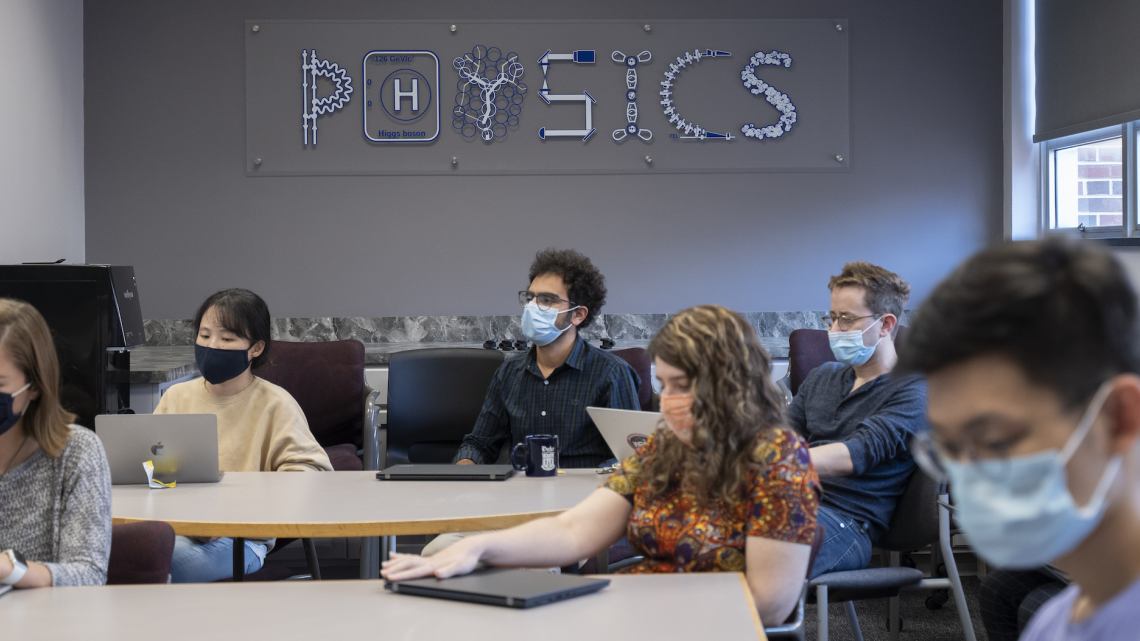Cosmology and Astrophysics study fundamental questions about the universe, such as its origins, the processes that govern it, and the nature of its components.
The Duke Cosmology Group, composed of professors Arun Kannawadi, Dan Scolnic, Michael Troxel, Eve Vavagiakis and Chris Walter, studies the nature of dark energy and dark matter. The group uses some of the largest astronomical sky-surveys to make the most precise measurements of the expansion of the universe and its composition. For more details, see the group website at https://cosmology.phy.duke.edu.
Cosmology-related projects in the Duke Cosmology Group are:
- The Vera C. Rubin Observatory (Rubin): A wide-field optical “survey” telescope that will observe the entire available southern sky every few nights to study the nature of dark energy and dark matter. The Rubin Observatory is currently under construction and is being commissioned, with the 10-year Legacy Survey of Space and Time (LSST) expected to start in Fall 2025.
- Nancy Grace Roman Space Telescope (Roman): The top-ranked large space mission of the 2010 National Academies’ Astro2010 Decadal Survey. Roman will observe thousands of square degrees of the sky in the near-infrared from a position in space 1 million miles from Earth. The planned launch date is in 2026 (by the summer of 2027 at the latest).
- The Dark Energy Survey (DES): An optical survey of 5000 square degrees (1/8th) of the southern sky that has found thousands of supernovae and observed hundreds of millions of galaxies to make the most precise measurements of the nature of dark energy and dark matter.
- Hyper Suprime-Cam (HSC): A deep multi-band imaging survey covering 1400 square degrees but capturing much fainter galaxies than DES does. The software used to process this dataset is the same pipeline developed for Rubin Observatory, and is a great example of what to expect from LSST.
The Cosmology group now has over 20 postdocs/grad students/undergrads working on a variety of projects.
The last 5 papers by grad students this year are:
Measuring Cosmological Parameters with Type Ia Supernovae in redMaGiC galaxies - Rebecca Chen, ApJ.
A Unified Catalog-level Reanalysis of Stage-III Cosmic Shear Surveys - Emily P. Longley, MNRAS.
Recent awards made to group members include:
Chris Walter wins the mid-career Guggenheim fellowship - 2023
Postdoc Maria Vincenzi wins the prestigious Hubble fellowship - 2023
Grad Student Rebecca Chen - DOE SGSR award - 2022
Postdoc Maria Vincenzi - URA Graduate Thesis award - 2022
Postdoc Maria Vincenzi - Michael Penston Thesis Prize by the Royal Astronomical Society - 2021
Dan Scolnic - Sloan Fellowship - 2021
Michael Troxel - 10 Most Brilliant Young Scientists and Engineers by Popular Science - 2021
Dan Scolnic - DOE Early Career Award - 2021
Michael Troxel - DOE Early Career Award - 2020
Dan Scolnic - Packard Fellowship - 2019
Brodie Popovic - DOE SGSR award - 2020
Emily Phillips Longley- DOE SGSR award - 2019
One related astrophysics group is the Duke HEP neutrino group, whose research focuses on neutrinos from core collapse supernovae and other astrophysical sources. See their website for more information on Duke’s astrophysics-related projects.
Teaching and outreach activities take place at the Duke teaching observatory.











